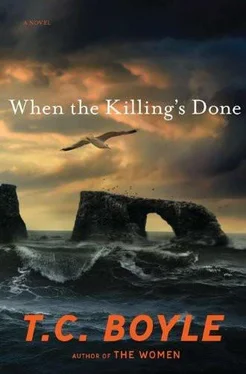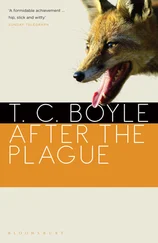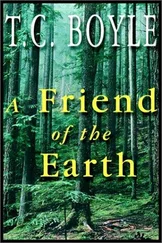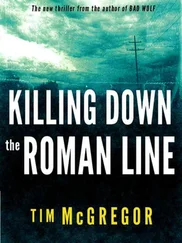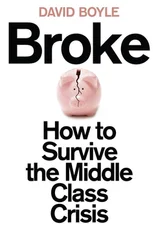“You stand right here — and don’t you even think about moving. I’m going to bring in as many as I can, right here, right here to you.” Her voice was rising up the scale. A quick hot glandular jolt burned through her.
Anise just stared at her.
“Just keep the goddamn birds off them. Okay? That’s all I ask.”
Her daughter’s face was blanched and small, as distant as if she were all the way across the field still. She was fifteen years old. She loved animals, loved her dog, loved the lambs, but this had nothing to do with love.
“Wake up!” she shouted, spitting the words at her over the rocketing surge of her blood, already turning away to scan the meadow for the lambs that had been spared, for the spindly inadequate legs and the rain-wet, blood-wet fluff of their coats, but all she could see was the ravens, dozens of them, piled up on the corpses like black blankets flapping.
N o one knows when sheep were initially introduced to Santa Cruz Island, but the first flocks of any size appeared sometime in the 1850s, under the direction of the island’s first individual owner, Andrés Castillero, or rather, his agent, James Baron Shaw, a Santa Barbaran he’d hired to manage the property. Castillero had been instrumental in negotiating a settlement after Alta California briefly seceded from Mexico in 1836, and for his efforts, the minister of the interior, by order of the president, granted him sole and exclusive ownership of the whole of Santa Cruz Island. From the point of view of the Mexican government, this was no doubt a reward of negligible value, since the Mexicans considered the islands too distant, arid and forbidding to be of much interest. Shaw erected a house and ranch buildings in the central valley, some three miles inland from Prisoners’ Harbor on the north shore, and introduced cattle, horses and sheep. In the interim, the treaty of Guadalupe Hidalgo ceded all of California to the government of the United States, along with what is now Texas, New Mexico, Nevada, Utah and Arizona, and Castillero, who had understandably begun to feel insecure about the legitimacy of his title, placed the following advertisement in the Daily Alta California for May 25, 1858:
FOR SALE: An island containing about 60,000 acres of land, well-watered and abounding in small valleys of the best pasturage for sheep. There are no wild animals on it that would interfere with livestock. There is a good harbor and safe anchorage.
A year later, a consortium headed by Eustace Barron, the English consul at Tepíc, Mexico, purchased the island, keeping Shaw on as manager. The new owners set about establishing a sheeping operation on a large scale, going all the way across the Atlantic to acquire the finest pedigreed stock, merinos from Spain and Leicester longwools from England, breeds known for the superior quality of their wool as well as their hardiness and adaptability. Given a virgin range and no predators to interfere with them (not even the golden eagle, which was not then known to nest on the Channel Islands), the sheep throve. Within ten years, there were as many as fifty thousand of them roaming the island. Santa Cruz, formerly sheepless, was suddenly rich with sheep. So rich that Barron was able to sell his interest at profit to a partnership from San Francisco, but the new owners, who incorporated as the Santa Cruz Island Company under the directorship of Justinian Caire, a perspicacious French dealer in hardware who’d sailed west to take advantage of the gold fever sweeping the region, found the population unsustainable. Water sources had dried up. There was insufficient forage. Something had to give.
If rats are the single most devastating invasive species when introduced to a closed ecosystem, then goats and sheep, with their ability to seek out even the most inaccessible niches and their capacity to consume and digest practically anything short of the dirt itself, are a close second. The problem, of course, is overgrazing. Barron’s sheep burned through the vegetation of the island like a wildfire, adapting their diet successively to include native succulents, shrubs and saplings once the grasses and forbs they preferred had been eliminated. The dry seasons lingered. The winds blew. And when the rains came on the shoulders of the monsoonal storms, the soil, no longer anchored by the roots of the devastated flora, peeled away like ineptly grafted skin. The seas darkened with silt. The native fauna, bereft of resources and shelter alike, died back and the pine forests of the high ridges thinned under the pressure of the relentless grazing so that there were fewer branches to collect and disperse the moisture of the fog, and the island became more arid still. So Monsieur Caire sent his lambs to market, sheared the flock in the transquila at the main ranch and sold the fleeces by weight, and then went out into the hills and shot what he couldn’t use. Twenty-four thousand sheep, give or take a few, were eliminated. And still the coreopsis and live-forever, the silver mallow, the gooseberry, manzanita and monkey flower, the toyon and mountain mahogany and deerweed were grazed to the nub before they could bloom and set seed. And still the woodland skipper and the cranefly and the katydid and the slender salamander declined and declined again.
The solution to the problem of overgrazing, as far as Caire was concerned, was to diversify. He bought out his partners and took up residence on the island. Under his direction, fields were plowed for crops and feed, a vineyard and winery were established, beef cattle were brought in and satellite ranches constructed at Christy Beach in the far west and at Smugglers’ Cove and Scorpion Anchorage in the east. The cattle grazed and so did the sheep, but their numbers were more or less kept in check by rigorous culling. A portion of the flock inevitably went feral and was hunted for sport, along with the wild hogs that infested the place like vermin, destroying fence, digging up the crops, raiding the vineyards under cover of night and leaving nothing behind but pulp and feces. Still, for all the fragility of the ecosystem, the Santa Cruz Island Company made a go of it, shipping lamb and beef, wool, hides, tallow and wine back to the coast, but it was the wine, especially, that made the coffers ring.
Caire had made his fortune catering to the needs of the forty-niners, dispensing picks and shovels and the like as they hit the pier running with maddened looks on their faces and hand-drawn maps of the Feather River drainage, Coloma and Dutch Flat clutched in their sweating hands, and offering them French porcelain, Sheffield china and fine cutlery when they returned flush with their profits, and this was all well and good. But his ambition was far grander. He saw himself as a propriétaire presiding over a château and cellars of his own, like those of Bordeaux or Languedoc. He had the terroir , now he needed les vignes . (And, not incidentally, a wife, a chatelaine to help him found the dynasty he was building in air each night as his head hit the pillow.) He sailed back to Europe first to acquire the wife — Maria Christina Sara Candida Molfino, of Rapallo, a district where the grapevines had woven their way across the terraced hills from time immemorial, a place where people knew grapes, where they knew wine, where their blood was infused with it and no meal, even breakfast, was without its medicinal touch — and then sailed again to bring back the finest French rootstock he could find.
He chose well, both in marriage, which was to produce nine children, six of whom survived into adulthood, and in matching his grapes to the terroir . The central valley, with the rich mineral content of its soil, its warm days and cool, sea-misted nights, presented ideal conditions for the growing of a suite of varietal grapes, and by the early 1890s the Santa Cruz Island label was shipping high-quality zinfandel, pinot noir, Burgundy, muscat de frontignan, Chablis and riesling up the coast to San Francisco. And when the Phylloxera aphid ravaged the Old World vineyards and laid waste to some 75,000 acres in California as well, Monsieur Caire’s 600 acres of grapes were unaffected — neither the aphid nor the adult Phylloxera fly had the means of crossing the barrier of the channel. Wine was scarce. Prices went up. Even after the proprietor’s death in 1897, the winery continued to prosper in the hands of his two sons, Arthur and Frédéric, right up until the unnatural disaster of Prohibition crushed it some twenty-two years later. Unaffected by such vagaries, the hogs continued their raids and the sheep grazed at will, until finally the sons dug out the vines and threw them on the dung heap for burning, so that all that remained were the deep horizontal furrows striping the flanks of the hills like the scars of an ancient wound.
Читать дальше
